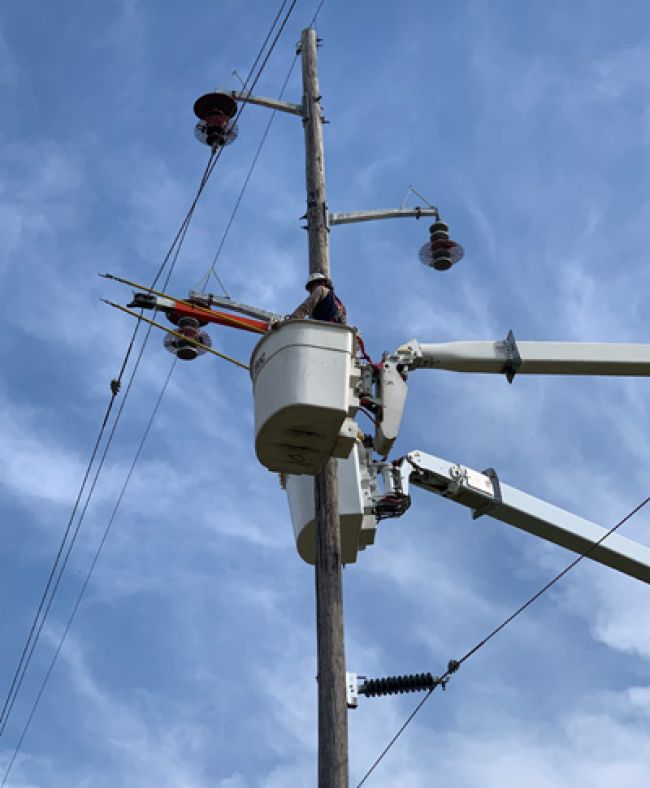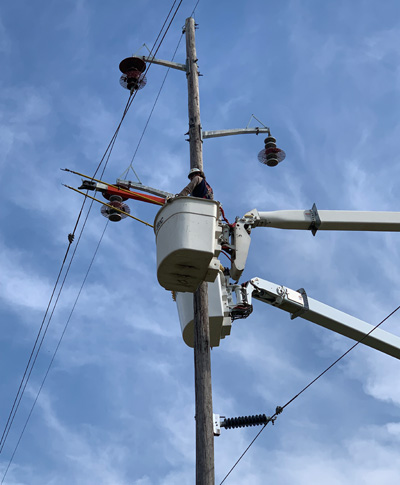
Using Situational Awareness to Enhance Field Security

Recently I was on a conference call during which a client and I discussed aggression aimed at the client’s line crews and service technicians. As I hung up, I came to the realization that hostility toward utility workers isn’t a passing storm – it’s a bellwether of change in the public attitude. Aggression directed at utility workers is a critical issue that we must deal with effectively before more people are hurt.
The truth is, a growing number of people no longer see investor-owned, municipal and cooperative utilities as benevolent service providers. Instead, they see adversaries who are blocking access to service entitlements and ruining the environment. Much of this growing animosity is aimed at utility office staff and field crews. In fact, the client that I was speaking with on the conference call I mentioned had seen a significant jump in the number of threats to their field employees, and they were looking for ways to mitigate the hostility and keep the workers from harm. As we talked, the need for sharper skills in identifying and responding to threats became evident. The client and I decided to move toward that goal, starting with awareness and baseline training.
What is Situational Awareness?
Awareness – or more precisely, situational awareness – is the foundation of effective security. Today, there are as many approaches to situational awareness training as there are security trainers. The problem for utilities is determining which training technique and which trainer to use, but we’ll get to that issue a little later. First, we’re going to talk about what situational awareness is and why we need a baseline of what’s normal in our specific working environment.
There are dozens of definitions of situational awareness. But regardless of what some security professionals would have you believe, situational awareness isn’t difficult to understand. You just need the right definition. I personally like the one used by the U.S. Coast Guard, which states, “Situational awareness is the ability to identify, process, and comprehend the critical elements of information about what is happening to the team with regards to the mission. More simply, it’s knowing what is going on around you.”
I especially like the last part of the definition: “It’s knowing what is going on around you.” That’s situational awareness in a nutshell. And it’s not hard to put into practice – you just need a basic understanding and a little training.
Situational awareness has both macro-level and micro-level components. The macro-level component is addressed before you leave the office to drive to the job site. At the macro level, both the utility and the employee need to monitor local and national events that could increase anxiety or heighten animosity within their community. For example, a major rate increase or disturbing news report can create a surge in local hostility. Exercising macro-level awareness provides opportunities to take preemptive measures against spiraling hostility. There are myriad preventive actions that can be considered when local hostility is identified, from postponing field tasks, to going over the “what-ifs” with the crews, to adding on-site monitors to keep an eye out for signs of trouble. However, once you address the macro-level issues, awareness becomes a micro-level exercise.
Your Safety, Your Responsibility
The most important security concept that every worker must understand is that you must always take responsibility for your own safety. It cannot be left up to your company, the community or the police. No matter how proactive your company may be, or how capable local law enforcement is, violence can erupt in seconds or even milliseconds. A situation can turn bad with astounding speed, and when it does, the only individual who has any chance of preventing your personal harm is the same one who stares back at you in the mirror each day. That is what makes your situational awareness skills so critical.
The second important concept to understand is that no matter how hard you try, you can’t be situationally aware all the time. Even attempting to maintain continuous awareness would interfere with getting your job done, and – as much as your company may like you – the only reason they pay you is to get the job done. So, how should you handle this issue? Take steps to control your work area, make certain you’re notified of changes in your environment and restrict unobserved access (e.g., people coming up behind you). You can accomplish all of this by establishing a baseline of awareness and creating an awareness platform, both parts of the micro-level component of situational awareness.
Focus on Context
Micro-level awareness begins before you step out of your truck onto the job site. As you pull into the area, start checking things out. The goal is to establish a baseline for the work area. In other words, determine what is normal for that particular environment. Once you understand what is normal and establish a baseline, you’ll be able to detect anomalies as they occur. Establishing a baseline takes skill, but it’s a skill you can learn and, with minimal training, employ with reasonable effectiveness.
Situational awareness focuses on context. In order to become situationally aware, you need to observe the local environment, setting and demeanor to identify baseline characteristics and spot potential problems. This baseline approach will help you notice subtle signs or clues that typically appear in advance of violence. Seldom will one sign or clue announce the approach of danger. If you reach a point where there is one glaringly obvious sign that something bad is about to happen, it’s likely you failed to recognize the more subtle warning signs.
The environment is the social setting and physical space that you occupy at a certain time. You need to understand your environment in order to build a baseline. Every location has its own unique characteristics. For example, the environment of a manufacturing plant will be different from the environment around a restaurant, and both will be different from the environment at a nightclub. Each community has its own routines, inhabitants, pace, language and code of conduct. All of these are environmental characteristics.
The setting can be defined as the changeable elements within the environment at any particular moment in time. These vary with time and conditions. Weather, temperature, business operations, the current population and a host of other elements make up the setting.
Demeanor is the third element of context. It is the outward behavior or bearing of both the community as a whole and the individuals within it. Demeanor provides a tremendous amount of information to those who are paying attention. A person’s actions and behavior can be one of the most telling signs of trouble. The demeanor of the local population at a job site will set the stage for social interaction. And once you’ve established the baseline demeanor, it will be easier to detect anomalies and identify hostile individuals.
Creating a Situational Awareness Platform
Once you’ve surveilled the area and determined your baseline, you’ll need to establish an awareness platform. Doing so will help you maintain a reasonable level of awareness while you focus on your work. An effective awareness platform will help you notice changes in the environment, alert you to baseline anomalies and warn you if you’re being approached.
Your awareness platform will look different at each location. At one location it may mean strategically placing equipment to create a barrier around the work site. At another, it may be as simple as surrounding the area with safety cones and a tape barricade, or the situation may call for bringing someone in to monitor the area while you focus on the task at hand.
Conclusion
The effectiveness of situational awareness hinges on noticing the little things that change around you. By establishing a baseline, creating an awareness platform and noticing baseline anomalies, you’ll be able to recognize subtle changes and enhance security for yourself and your co-workers.
Improving your situational awareness skills is a personal choice. You begin improving your awareness the moment you decide to start paying attention to what is going on around you. The next step is to find training that sharpens your skills.
Finding the right training program and trainer can be challenging. When you start looking, you’ll find lots of people who claim to have security expertise, especially among members of law enforcement, ex-military personnel, and martial arts practitioners. Many are good trainers with excellent capabilities. However, much of the training they provide tends to be more tactical in nature than work-related. That’s great if you’re a SWAT officer, but it’s not terribly useful when you’re a utility professional.
Civilian security training isn’t the same as military training, it isn’t law enforcement training, and it isn’t all theoretical. Effective civilian security training blends the relevant parts of those types of training with real-life experience to create a program that will teach utility field workers what they need to know to keep themselves safe. Your life and the lives of those around you are valuable, so be sure the training you invest in meets your specific needs.
About the Author: Jim Willis, CMAS, CHS-V, is president of InDev Tactical, a security training and consulting firm that has provided security advisory assistance for more than 15 years. He has over 40 years of experience in the electric power industry, from lineman to substation engineer to director of special projects for NRECA’s International Programs division. Willis is a credentialed homeland security specialist and anti-terrorism expert with expertise in counterterrorism, planning, training and security operations. He can be reached at jim.willis@indevtactical.net.
- When OSHA Knocks
- The Field Observation: A Proactive Safety Methodology
- The Antidote to Complacency and Familiarity
- Using Situational Awareness to Enhance Field Security
- Train the Trainer 101: Know OSHA – or Pay the Price
- Voice of Experience: Accurate Utility Locates are Critical to Crew Safety
- December 2019-January 2020 Q&A
- Frontline Fundamentals: Lead to Win Highlights and Implementation

